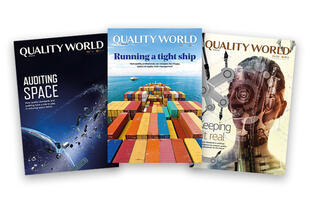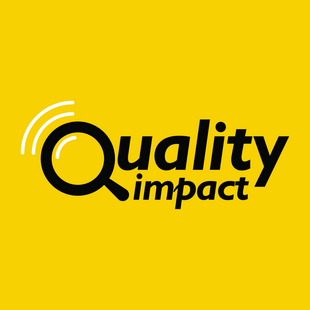
Beyond checklists: embedding quality in the everyday
Progress indicator

Susan Samaroo CQP MCQI, Principal Auditor and Group QHSE Manager, makes the case for why quality must shed its ‘checklist’ image to become an integral part of every organisation.
In the world of quality management, checklists, audits and procedures are vital tools. They help ensure compliance, reduce risk and drive consistency. But, as many seasoned professionals will tell you, real quality does not live in forms or manuals. It lives in decisions. Daily, practical, human decisions.
Yet, too often, those decisions are made in silos, under pressure, or without the right context. So, how do we move beyond checklists to embed quality into the DNA of everyday operations?
The risk of the ‘checklist mentality’
Checklists are incredibly useful. In aviation and healthcare, for example, they have saved countless lives. However, a checklist mentality, where ticking boxes becomes the goal, can lead to stagnation. People begin to see quality as a task for audits rather than a mindset that should guide every action, interaction and improvement opportunity.
Symptoms of checklist mentality include:
- completing documents without reviewing their real content or purpose;
- focusing on passing audits rather than identifying actual performance gaps;
- a lack of quality ownership from frontline employees and middle managers;
- minimal integration of quality thinking in decision-making processes.
This approach stifles initiative and disempowers teams, reducing quality to a paper exercise.
"One of the most transformative shifts any organisation can make is to move from quality as a department to quality as a culture."
Quality as a decision filter
In high-performing organisations, quality is a lens, not a layer. It is used to evaluate every decision, from hiring and procurement to customer service and operational strategy.
Ask yourself:
- Are people encouraged to speak up when a process doesn’t align with quality expectations?
- Do leaders ask “What are the quality implications?” before making changes?
- Are metrics focused only on output, or do they include customer experience and long-term sustainability?
When quality is integrated as a decision filter, it becomes proactive, not reactive.
From quality department to quality culture
One of the most transformative shifts any organisation can make is to move from quality as a department to quality as a culture. This starts by decentralising ownership. Everyone, from the shop floor to the C-suite, should feel personally responsible for quality outcomes.
Here’s how to make that shift.
- Train for understanding, not just compliance: Equip teams with the ‘why’ behind standards. If people understand the rationale, they are more likely to make quality-based decisions without needing step-by-step supervision.
- Celebrating quality wins: Recognise when employees prevent errors, raise concerns or improve processes. It reinforces the idea that quality is valued, not just expected.
- Use storytelling: Share real examples of when good decisions led to improved customer satisfaction or when ignoring quality principles caused problems. Stories connect more deeply than procedures ever could.
Empowering the front line
Your most critical quality decisions often aren’t made in boardrooms; they are made by employees on the floor, in warehouses, on customer service desks, and in delivery vans.
Empowerment here means:
- providing the right information at the right time;
- encouraging autonomy to stop or change a process when needed;
- giving tools to escalate concerns or suggesting improvements.
For example, a production operator who notices inconsistent labelling might flag it early, preventing hundreds of nonconforming units from reaching customers – but only if the culture says “Yes, your voice matters”.
Quality conversations in strategic decisions
Embedding quality into strategic decision-making is essential. Here are a few scenarios where quality should be at the table.
- New product or service launches: What controls are in place? Have we tested the customer journey?
- Mergers or acquisitions: Are we aligning shared quality principles and systems?
- Technology adoption: Will it improve or hinder visibility, traceability and user satisfaction?
Too often, quality teams are consulted late, after contracts are signed or implementations begin. To prevent this, leaders must embed quality professionals into cross-functional teams and planning processes from the start.
Digital transformation with a quality mindset
With artificial intelligence (AI), data analytics and Industry 4.0 reshaping operations, quality has an expanded role. The ability to track trends, analyse failures and proactively address risks is more powerful than ever.
However, digitalisation without a quality mindset can amplify poor decisions faster. Automation is only as good as the logic behind it. So, quality professionals must guide how digital tools are validated, aligned with customer needs, and integrated with risk and process-management frameworks.
Think beyond dashboards – focus on how data supports better decisions, faster.
Measuring what matters
To drive everyday quality decision-making, organisations must also measure what matters. That means shifting from lagging indicators (eg, number of defects found) to leading indicators (eg, number of improvement ideas submitted, process deviation alerts, customer effort scores).
When key performance indicators focus only on quantity or speed, people make decisions that serve numbers not quality. But when metrics reflect performance and experience, it reshapes behaviour.
Building quality leadership at every level
Embedding quality in decision-making requires leaders who model it. Not just quality managers, but supervisors, directors and project leaders.
Quality leaders:
- ask the right questions;
- push for long-term solutions, not quick fixes;
- develop their teams’ critical thinking;
- align quality goals with organisational strategy.
Investing in leadership training, coaching and decision-making frameworks that align with ISO principles can multiply impact across departments.
From ticking boxes to thinking big
Checklists are not the enemy; they are tools. But they must serve a broader vision of quality, one in which decisions are guided by values, data and the voice of the customer.
When quality becomes part of how people think, decide and act, organisations unlock more than compliance – they unlock innovation, resilience and sustainable excellence.
Let’s move beyond ticking boxes. Let’s make every decision a quality decision.
Read more insight from Susan Samaroo
"In a business landscape that is constantly evolving, staying ahead means understanding every aspect of your operations – looking at the full picture. That is where a 360° business process map becomes not only a tool, but also a strategic asset."
Quality World

Get the latest news, interviews and features on quality in our industry leading magazine.
The latest from the CQI Podcast

Listen to the Quality Impact podcast, where experts share insights on the evolving role of quality across industries.



